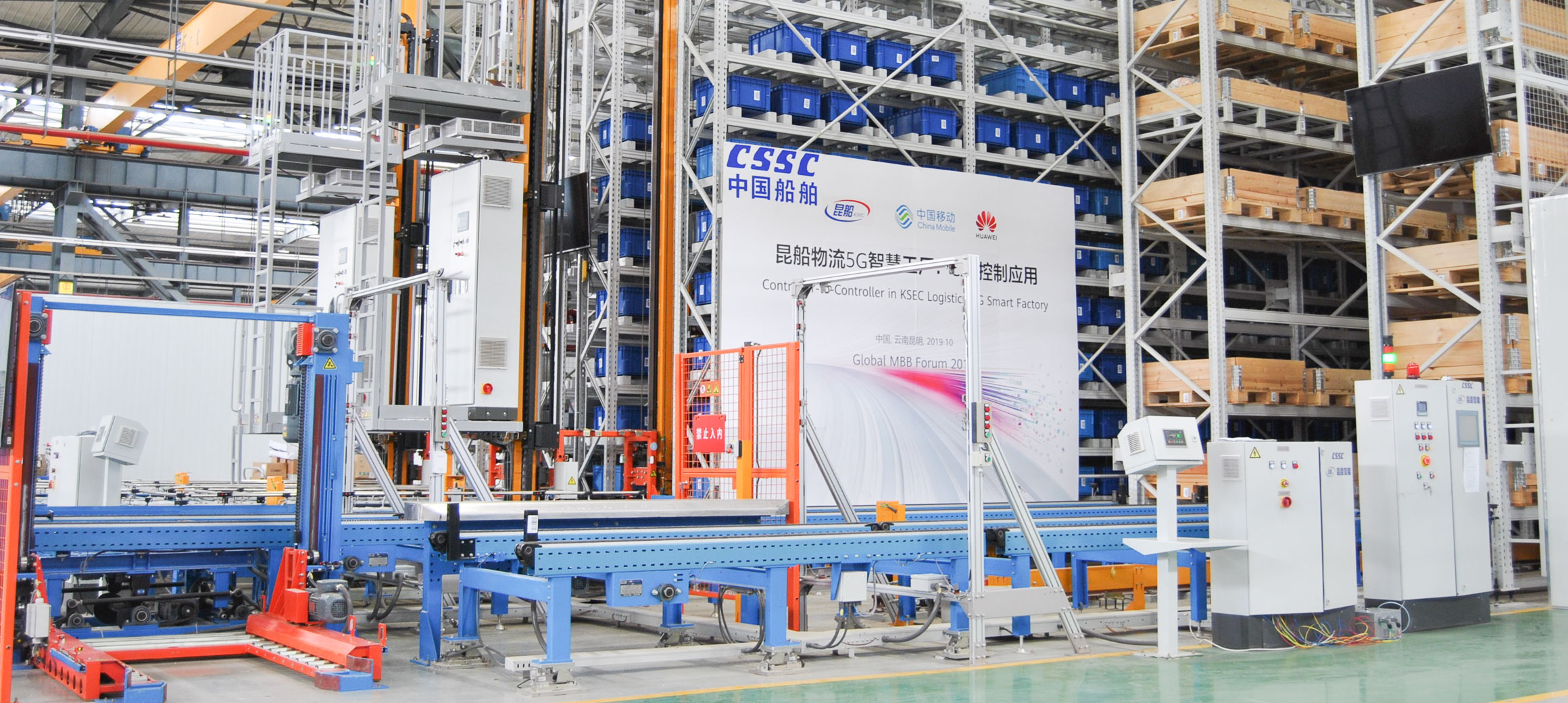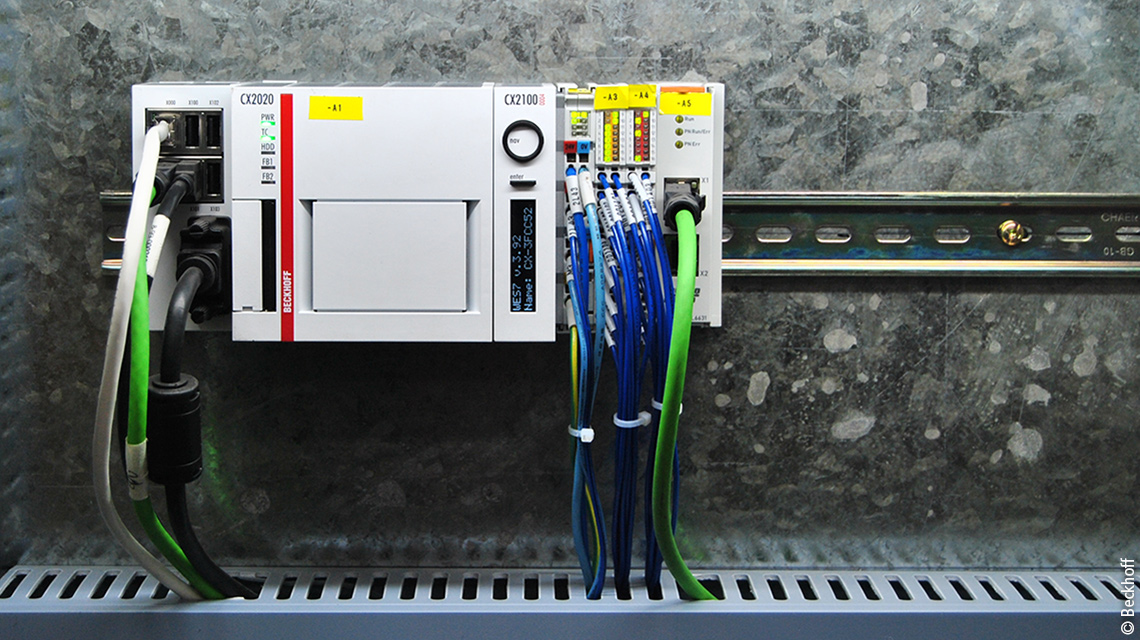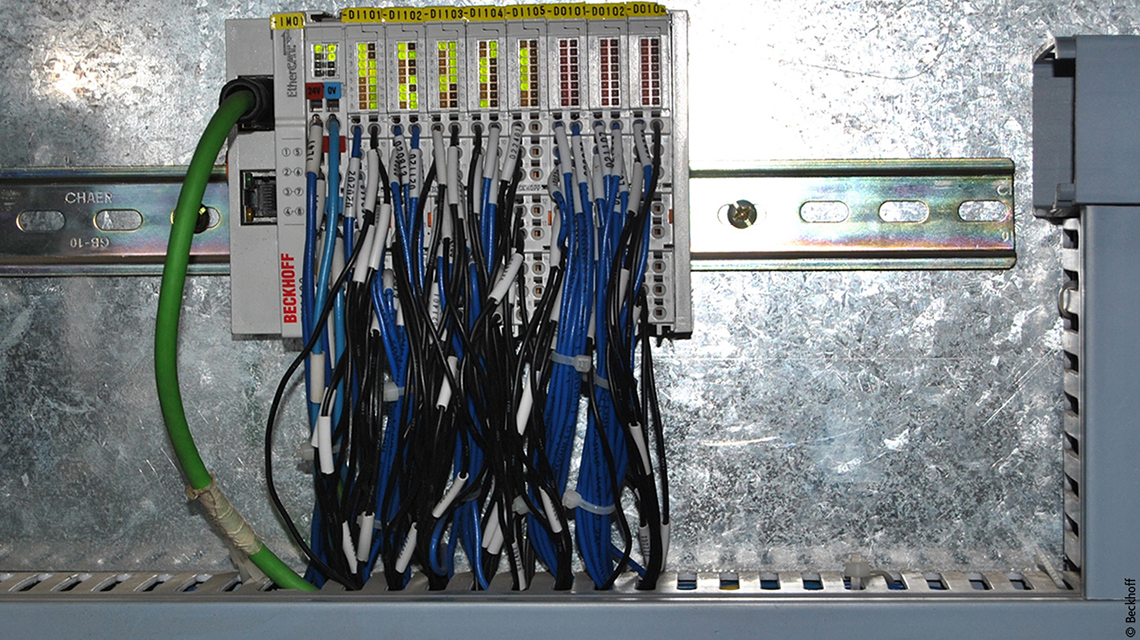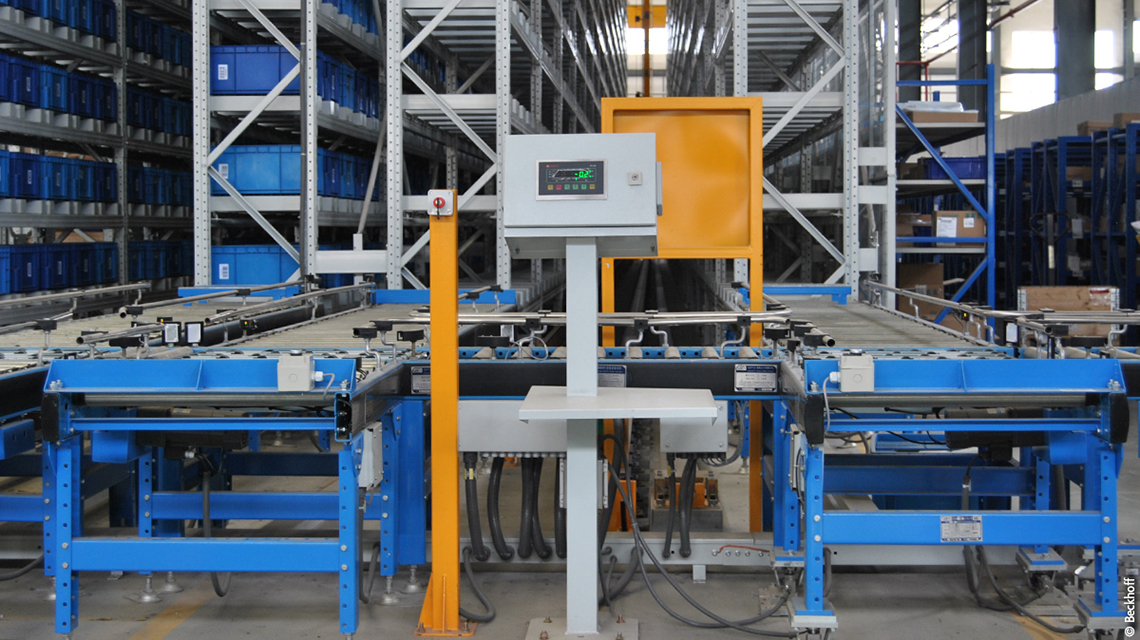

Open control solution facilitates system-spanning communication
In a new automated testing and high-bay warehouse for Kunming Shipbuilding Equipment, specialist KSEC Intelligent Technology managed to increase system efficiency and meet the requirements for intelligent manufacturing. Using the open and compact control technology from Beckhoff as a foundation contributed greatly to this success.
KSEC Intelligent Technology Co., Ltd. (KSEC Intelligent) is part of Kunming Shipbuilding Equipment Co., Ltd., a subsidiary of China State Shipbuilding Corporation Limited (CSSC). The company has more than 1,800 employees, 1,000 of whom are professional and technical engineers, with total assets of nearly 3 billion yuan (RMB). The main business includes the development, design and system integration of automation for warehousing and e-commerce logistics. As a leading logistics solution provider in China, KSEC Intelligent has relied on Beckhoff technology to develop a variety of machines, such as sliding shoe sorters, cross-belt sorters, multi-layer shuttle vehicles, circular shuttle vehicles, AGVs and others.

When KSEC Intelligent took on the project of implementing an automated high-bay warehouse, the company decided to also use it as a test site. The new warehouse and distribution center needed to store and distribute components and parts for later assembly in the workshop. The goal was to improve information management and material flow and to use the warehouse as a test bench for a high-speed and high-performance stacker system. KSEC Intelligent launched a full-scale evaluation project and chose Beckhoff as the main supplier of control technology to improve the diversity of their electronic control product portfolio, explore high-level programming languages and fully utilize the performance capacity of PC-based control.
System architecture and control functions
In the final configuration, the database server and scheduling server are at the highest level of the system architecture, managing production data, interactions with the MES/ERP system and the distribution of tasks scheduled. The local PLC, the stacker and other systems are at the same level of control. The weighing units, roller conveyors, two-dimensional code identification system, optical inspection system and operator terminal serve as sub-systems of the local PLC.
The system functions include control of storage and retrieval processes, material query, material management and so on. To store incoming goods, forklifts move pallets to the warehouse entrance and place them on the PLC-controlled conveying system. As the roller conveyor moves these goods, the system reads a two-dimensional code on the pallet containing the product information, which the controller forwards to subsequent system sections. After scanning, the pallets move to the optical inspection area to examine their appearance and size, and then proceed into different roller conveyors depending on the measured size. After that, the pallets move to floor scales for weighing. The information regarding size and weight is added to the pallet information, and according to this information, the scheduling system selects an appropriate shelf to store these pallets.
Open PC-based control technology simplifies communication
While the logic control of the roller conveyor is relatively simple, the communication between warehouse equipment and higher-level systems is more complex in contrast. This creates challenges in ensuring stable and reliable data exchange between all systems and recovering the data quickly in the event of a system failure, for example. In contrast to conventional PLC controllers, however, the CX2020 Embedded PC supports all these processes and eliminates the need for additional PC devices.

In fact, according to KSEC Intelligent, PC-based control technology from Beckhoff offers advantages in terms of connectivity, high-speed and high-precision control of machines compared with traditional control. Overall, the system openness of PC-based control simplified communication in this project. Thus, communication with the stackers is implemented via the PROFINET protocol supported by the local PLC; data exchange with the 2D code reader is based on Modbus TCP, and UDP communication with the optical inspection system is achieved via TCP/IP. In addition, the controller can communicate directly with the database using TwinCAT Database Server to store all relevant weight, appearance and size information. Combining the Embedded-PC with a Beckhoff Control Panel CP2912 also creates a compact control unit integrated into the control cabinet, which eliminates the need for separate operator terminals.
Moreover, the high connectivity of PC-based control is also reflected in the support of VPN communication. The customer's technical center is located in an urban area, whereas the warehouse is located in an industrial park 10 km away. When a problem occurs on a machine, the customer can log in to the control system remotely from the technical center, which is convenient for guiding the operators on site to troubleshoot.
Compact I/O modules help reduce hardware costs
"The competition in the logistics industry is very fierce now. It is crucial for us to reduce costs. The overall hardware costs are roughly 30% lower by using 16-channel high-density terminals from Beckhoff compared to previous systems we used," says engineer Yang, the responsible person of the electric control design in this project.
The system configuration includes five floor scales, which are connected to the EL6631 PROFINET RT controller/device terminal via EtherCAT. "The configuration of EtherCAT gateway modules from Beckhoff is flexible and convenient. Other vendors’ gateway modules that I have used previously needed to be configured with stand-alone software applications, while the configuration of EtherCAT gateways can be completed conveniently and consistently using TwinCAT software," says KSEC engineer Liyuan Feng, who is responsible for project debugging.

Efficient engineering reduces implementation time
Software and hardware components from Beckhoff can be developed and debugged separately. Software engineers can write and debug programs without the need to know the corresponding hardware. Hardware engineers only need to link variable points with the actual hardware points according to the requirements of a point table. The specialized division of labor enables engineers to focus on optimizing the system; software and hardware can be implemented at the same time and then combined for joint debugging to reduce the implementation time of the project. In addition, when a hardware channel is defective, the hardware engineers only need to unbind the current variable links and redirect them to another channel, without the need to modify the source code.
The simulation mode of the program is another advantage of TwinCAT. "After finishing the development of our software, we need to make an inline simulation debugging for it with the TIMMS VCCS software. Beckhoff does a good job in supporting simulation, so after installing TwinCAT, my PC became a powerful controller, and I was able to find the bugs in my programs in a straightforward way," explains engineer Liyuan Feng. TwinCAT supports all six IEC 61131-3 programming languages, which can also be combined in one project. The intuitive and clear logic of Ladder Diagram (LD) programming is used for roller control. Structured Text (ST) programming is used to implement Modbus TCP communication, UDP debugging and computational algorithms.
Outlook
With advances in Smart Factory and Industrie 4.0 concepts, logistics automation will depend on intelligence and digitalization to a greater degree in the future. Traditional, “black box” PLC control is unable to achieve the new functions needed, according to KSEC Intelligent. However, PC-based control technology, as a branch of PC technology, is inherently well equipped to realize the integration of automation, intelligence and information technology on one platform. "We have seen the great potential of PC-based control in this project,” engineer Yang sums up. “In the next project, we may consider using a more powerful Beckhoff PC-based control system to replace the current server system, and that could save us the cost of two servers."